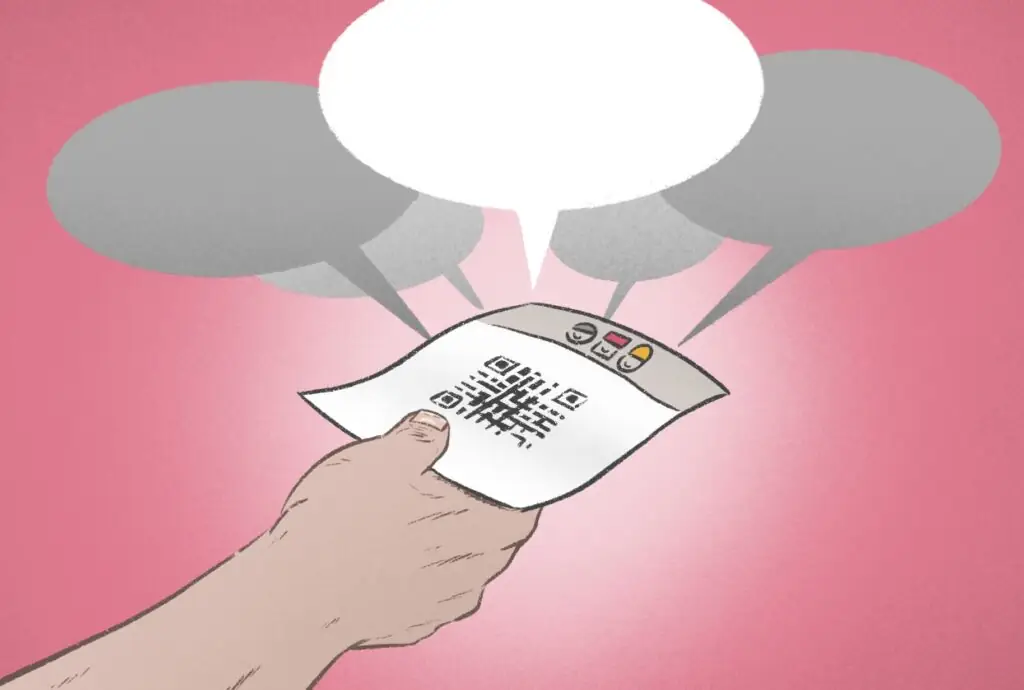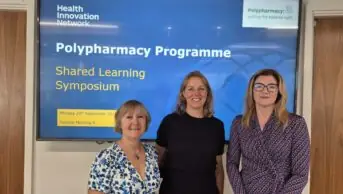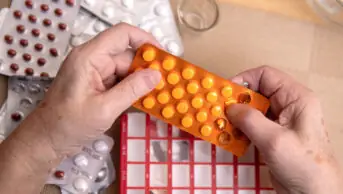
Wes Mountain/The Pharmaceutical Journal
‘Me and My Medicines’, a campaign supported by Health Innovation East Midlands (HIEM), is aimed at supporting primary care to identify patients at potential risk of harm from problematic polypharmacy.
The campaign has been devised to allow clinicians to have better conversations with patients about their medicines to help facilitate shared decision making. As part of the HIEM polypharmacy programme, the ‘Me and My Medicines’ campaign targets ‘Pillar three: Public Behaviour Change’, which implements public-facing initiatives to change the perception of prescribing to the public to encourage them to open up about their expectations and concerns about their medicines.
Radford and Mary Potter Primary Care Network (PCN) in Nottingham was selected to promote the campaign in 2023, owing to its patient demographics: black and minority ethnic (BME) groups form 46% of its resident population, while 66% of the population are classed as living in the most deprived areas of England. Both statistics are above England’s national average.
Over the past four years — initially working within the PCN as a clinical pharmacist, developing into my current role as a pharmacist manager for the PCN — communication has emerged as a barrier to engaging with the patient population and this fuelled my passion to trial the ‘Me and My Medicines’ campaign within the PCN.
In November and December 2023, HIEM provided practice information sheets, a ‘Stopping your medication’ guide and a patient invitation letter for a structured medication review (SMR), which detailed what a review involves and how the patient may wish to prepare for the consultation. The leaflets were promoted across the PCN’s GP practices, local community pharmacies and by attaching the invitation for a medication review by HIEM to the PCN’s invitations for an SMR.
We also conducted a networking meeting with all of the PCN’s clinical staff to promote the use of the ‘Me and My Medicines’ documents and the social prescribers promoted the leaflets in their community groups.
Each of these documents was made available to patients in nine different languages — Arabic, Bengali, Gujarati, Polish, Punjabi Gurmukhi, Punjabi Shahmukhi, Romanian, Somalian and Urdu — and each document had a QR code that led the patient to an audio version of the document in their chosen language.
We decided to conduct a quality improvement project by monitoring the change in number of SMRs over a three-week period after the implementation of the documents. The Figure below outlines the process of the quality improvement project.

The Pharmaceutical Journal
The baseline data, collected in October 2023, showed that the PCN conducted 24 SMRs in the three weeks before distributing the ‘Me and My Medicines’ leaflets. After promoting the materials, the number of SMRs conducted by the PCN increased by 88% to a total of 45 SMRs in the three subsequent weeks from 3 January 2024.
The increase in structured medication reviews proved that we were able to target those patients that were usually difficult to reach, owing to language barriers
The increase in SMRs proved that we were able to target those patients that were usually difficult to reach, owing to language barriers within the PCN’s patient population. The use of the documents shows that we were able to reach those patients that are unable to read English, while also reaching patients unable to read their own language but able to understand the audio version of the information in their language.
Although there was an increase in the number of SMRs, there were some limitations of the quality improvement project. The PCN has high levels of deprivation in comparison to the national average and so not all patients would have access to a smartphone to be able to use the QR code. Not all patient records include the patient’s language, so the appropriate invitations in their language could not be sent out. Also, we only promoted the documents for two months, limiting patient exposure to the information.
As a PCN, we will continue to use and promote the documents in the ‘Me and My Medicines’ campaign as it has proved to be successful. In the future, to improve our communication with our patient demographics, we can look at creating a video showing patients how to use the QR code using interpreters and have a demonstration using sign language to target those patients with a hearing impairment. This video can then be played in the patient waiting areas within the practices and within community pharmacies.
We will also start to document patients’ preferred language so that we can offer the appropriate interpreters and send out information to patients in their chosen language. For those patients that have no access to smartphones, we can post out information in their language.
These steps will help to break down the language and communication barriers with the aim of enabling our clinicians to have better conversations with patients about their medicines and improving the process of shared decision-making.
Bhavika Lad is pharmacist manager at Nottingham City General Practice Alliance


